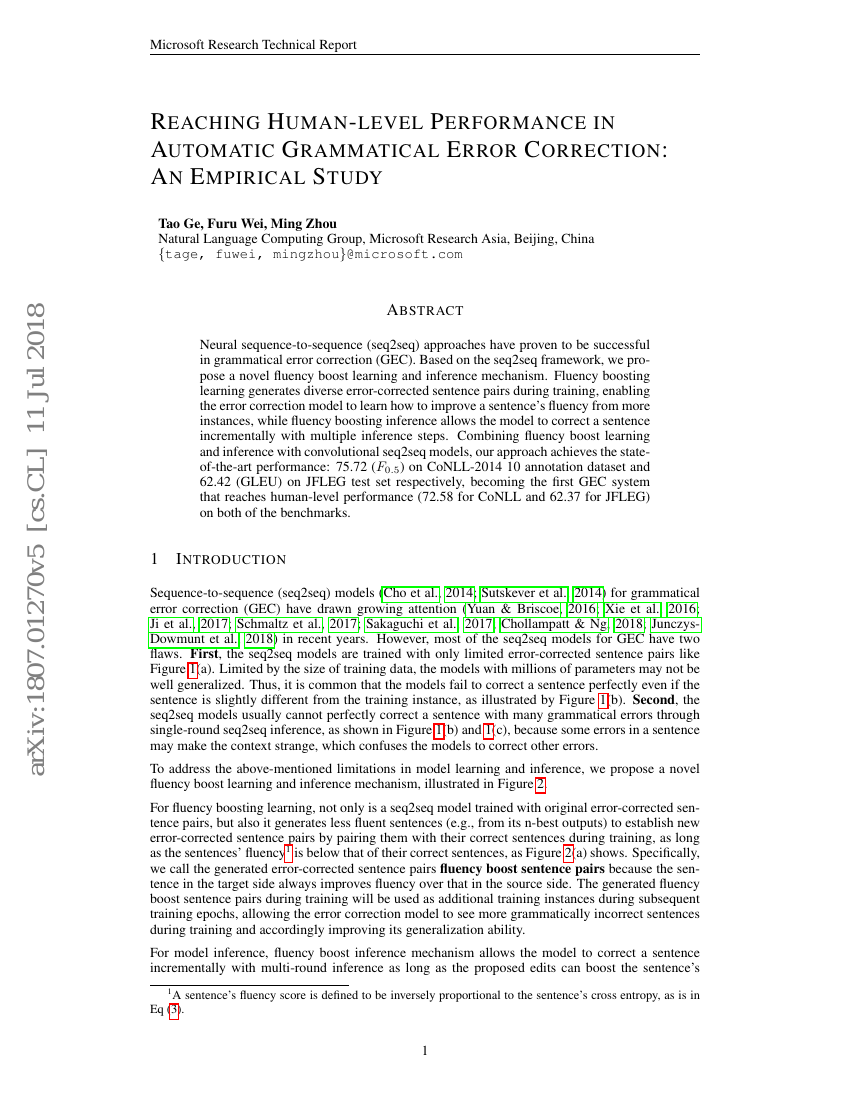Command Palette
Search for a command to run...
Reaching Human-level Performance in Automatic Grammatical Error Correction: An Empirical Study
Tao Ge; Furu Wei; Ming Zhou

Abstract
Neural sequence-to-sequence (seq2seq) approaches have proven to be successful in grammatical error correction (GEC). Based on the seq2seq framework, we propose a novel fluency boost learning and inference mechanism. Fluency boosting learning generates diverse error-corrected sentence pairs during training, enabling the error correction model to learn how to improve a sentence's fluency from more instances, while fluency boosting inference allows the model to correct a sentence incrementally with multiple inference steps. Combining fluency boost learning and inference with convolutional seq2seq models, our approach achieves the state-of-the-art performance: 75.72 (F_{0.5}) on CoNLL-2014 10 annotation dataset and 62.42 (GLEU) on JFLEG test set respectively, becoming the first GEC system that reaches human-level performance (72.58 for CoNLL and 62.37 for JFLEG) on both of the benchmarks.
Code Repositories
Benchmarks
| Benchmark | Methodology | Metrics |
|---|---|---|
| grammatical-error-correction-on-unrestricted | CNN Seq2Seq + Fluency Boost and inference | GLEU: 62.37 |
| grammatical-error-correction-on-unrestricted | CNN Seq2Seq + Fluency Boost | F0.5: 61.34 |
Build AI with AI
From idea to launch — accelerate your AI development with free AI co-coding, out-of-the-box environment and best price of GPUs.